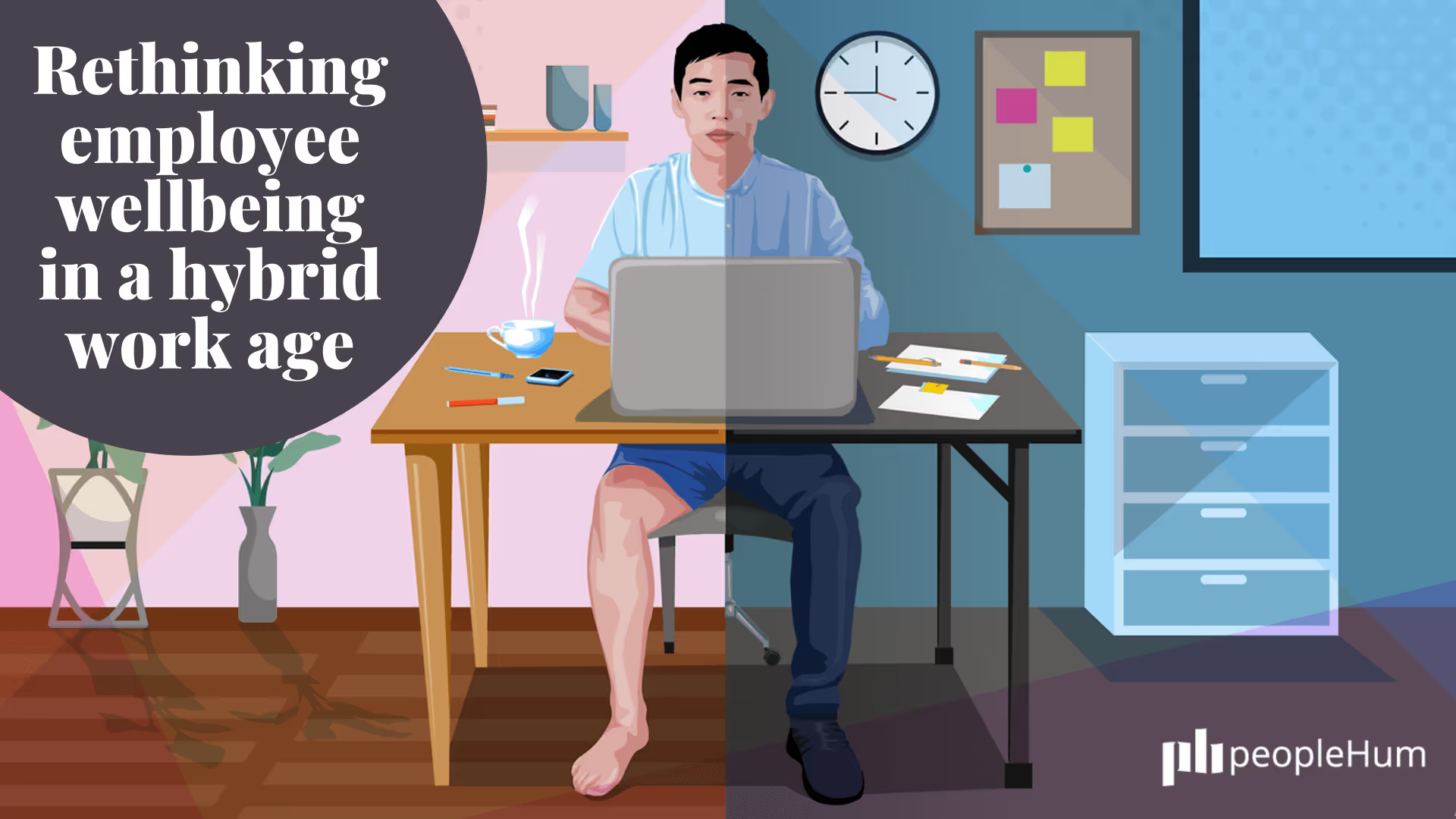The year 2020 mercilessly inflicted a barrage of challenges for us to face, and there doesn’t seem to be any signs of them slowing down. Through our personal and professional lives, we have sacrificed and lost a lot, and yet, have discovered, predictably or otherwise, newer avenues that are still beyond the confines of our comprehension.
Globally, workplaces are facing a momentous shift. And no matter the industry you are working in, this shift is affecting employees everywhere. The Microsoft 2021 Work Trend Index report states one point definitively: flexibility and hybrid work will define the post-pandemic workplace. According to consensus, 73% of employees surveyed in the report want flexible remote work options to stay, and about 66% of leaders say that their companies are considering redesigning office space to make way for hybrid work.
In this blog, we are going to briefly explore the challenges presented by the hybrid workplace and how employers need to rethink employee wellbeing in the hybrid remote working age.

What we need to understand about hybrid remote working
This one’s a no-brainer, but for the uninitiated, the first and most important acknowledgement to make right now is that to successfully operate in a hybrid workplace we must understand that replicating the practices that worked in the office and adapting them to the remote work environment is not a sustainable solution. New challenges call for new solutions, and to function in today's environment means adapting and building processes that serve our present needs.
But first, let’s take a refresher on the hybrid workplace model.
A hybrid is a thing composed of different elements. The hybrid workplace model is the combination of the traditional office model with remote work. A famous distinction of this form is that employees have the freedom to choose when and where they get to work. In theory, the concept sounds like the perfect balance. But what makes it such a struggle to implement in practice?
When COVID-19 hit us last year, companies began working from home, and a huge portion of them for the first time. They implemented quick solutions that seemingly solved the problem, until they couldn’t sustain any longer. Most people were required to adapt to remote work before they were even prepared for it.
Now, as companies are slowly returning to office, employees are finding themselves in a new phase. Some opt for the traditional office, while the others choose to work from home. According to Work Trends Study, about 43% of remote workers that were surveyed were planning to move away this year because they can now work remotely. Now, with hybrid remote working, people don’t even have to relocate to expand their careers. The talent landscape is redrawing its limits.
Shaping company culture around remote work
One of the main concerns when it comes to a hybrid workplace, is how to grow and nurture a company culture that aligns with the values and beliefs of the company. As employee experience is closely linked to company culture, it is the one aspect that needs to be safeguarded in a remote work setting. But a major challenge that will permeate through the pandemic and into the hybrid workplace is the growing issue of employee wellbeing.
We are mistaken in believing that leveraging communication is the only sufficient tool for transforming culture. In fact, with increased level of communication from all fronts and employees being forced to adapt to a greater volume, the problem arises with their ability to absorb the immense information. Once all channels of communication are saturated, employees risk losing key information amongst the heavy volume. And as a result, employee wellbeing is negatively affected, leading them to feeling stressed and burned-out.
However, these problems don’t exist in a vacuum, and the solutions to remedy them are also being developed. The HR tech marketplace brims with platforms and tools that understands the unique needs of organizations. With the power of AI, organizations are able to study performance through people analytics, manage tasks and engage employees efficiently without the extra noise, spur innovation through skills-based learning, and ramp up remote team productivity.
Rethinking employee wellbeing in the hybrid remote working age
As with anything, the key to avoid being overwhelmed by communication, is to purposefully approach it with a strategy & plan in place. Poor decision making and the lack of a formal framework are a few reasons why companies tend to get the culture aspect of remote teams all wrong.
Prior to being locked in their homes, employees had several avenues to balance out work stress, such as reasonable work hours, human connections in the workplace, water cooler talks, and also the daily commute which served as a buffer between work and personal lives. Hybrid and remote workspaces have nearly eliminated these stress diffusers, thus inevitably forcing leaders to take up transformative actions to support employees and reduce stressors in the new workplace.
So, what benefits can employers provide in a turbulent workspace? Here are some suggestions with which to start-off:
Train leaders to manage the new work arrangements
The previous year has shown how ill-equipped leaders were in managing remote teams, whether in maintaining engagement or keeping productivity up, let alone supporting their mental well-being. According to Capita’s report on The Six Wellness Imperatives for HR in a Hybrid Workplace, 45% of HR and benefits leader stated that lack of ownership and clear strategy was one of the biggest barriers to improving employee wellbeing in their organization.
Lack of transparency, working in silos, and inconsistency are all meant to remain in the past. There is a need for leadership training that enables leaders and managers to serve employees effectively during present circumstances.
Streamline communication to facilitate human connection
The Work Place Trends report has surveyed that between February 2020 and February 2021, nearly 62% of all communications, including calls and meetings, have been unstructured, unscheduled, and conducted ad hoc. And workers are certainly feeling the pressure to keep up. The intensity of the workday has increased significantly, so the natural solution to that would be to streamline communication.
Organizations must adopt agile tools designed specifically for remote workplaces; Tools that enable leaders and managers to assign and track tasks, be on top of dependencies and hurdles in real time, and thus enable seamless collaboration. With the support of leaders, the right tools, and sound strategy, teams will be able to tackle work and communication confidently.
Comprehensive employee wellness programs
Think of employee wellness programs as the probiotic drink that keeps your gut healthy and ready to ward off antigens. In ordinary time, these programs are intended to help employee health and wellbeing, to enable them to adjust seamlessly to new working conditions. Designing a comprehensive employee wellness program is important in improving employee productivity and in reducing turnover.
Studies show that meditation can fight burnout and stress during the workday, so adding meditation and stress management classes have the potential to deliver high returns on investment to businesses.
Also, to keep your employees healthy, and motivated, make sure to reward them for their achievements. For example, if you have a fitness challenge going on, you can create your own fitness merch and reward the winner. Another way to appreciate your team’s hard work could be with personalized gifts, such as awesome bomber jackets or cool personalized t-shirts and mugs, which can boost morale and unity.
Adjusting employee benefits to the new reality
A large number of existing employee benefits were designed around physical presence in the office. However, with hybrid remote working here to stay, that needs to change to avoid companies being guilty of proximity bias. Employee voice is the perfect yardstick to understand what matters to them. With the help of employee engagement surveys, leaders and managers can figure out the kind of benefits that matter to employees in the hybrid work setting.
Make engagement with employees more effective by collaborating to have their feedback implemented.
Conclusion
Additionally, in order to manage the hybrid remote working experience, it is helpful to keep some basic principles in mind.
- Transparency: To create a strong culture and experience, it is necessary to build trust. Leaders must encourage an environment where diversity of inputs is acknowledged, question how their decisions contribute to the culture, and this must all be transparently communicated in the workplace.
- Agility: Leaders need to identify the areas where agility can be applied to processes in place and whether these processes can adapt to the changing environment.
- Seamlessness: The employee experience needs to be fundamentally seamless, despite the change in environment.
When it comes to employee wellbeing, getting it right in hybrid remote working may not be simple at first. But by maintaining and transforming the cultural elements that defines your organization, you will be heading down the right track. By incorporating the principles elucidated above, and proactively heeding the suggestions to improve employee wellbeing, organizations can confidently move forward with processes that will sustain them for the years to come.



































.avif)














